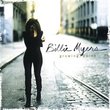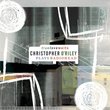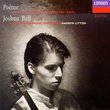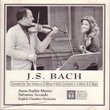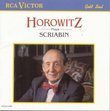| All Artists: William Schuman, Gerard Schwarz, Seattle Symphony Orchestra Title: William Schuman: Symphonies Nos. 7 and 10 Members Wishing: 0 Total Copies: 0 Label: Naxos American Original Release Date: 1/1/2005 Re-Release Date: 10/18/2005 Genre: Classical Styles: Historical Periods, Modern, 20th, & 21st Century, Symphonies Number of Discs: 1 SwapaCD Credits: 1 UPC: 636943925522 |
Search - William Schuman, Gerard Schwarz, Seattle Symphony Orchestra :: William Schuman: Symphonies Nos. 7 and 10
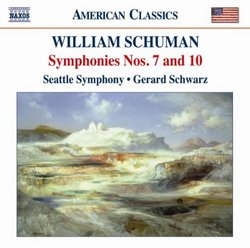 | William Schuman, Gerard Schwarz, Seattle Symphony Orchestra William Schuman: Symphonies Nos. 7 and 10 Genre: Classical
|
Larger Image |
CD DetailsSimilarly Requested CDs
|
CD ReviewsA William Schuman Cycle -- Symphonies 7 and 10 Robin Friedman | Washington, D.C. United States | 12/08/2005 (5 out of 5 stars) "William Schuman (1910 --1992) once met an admirer from Macon, Georgia who told him how much she enjoyed his music "even though it was atonal". Schuman politely responded that he did not write atonal music --his works always had a key center. But his admirer had the last word. She said, "Mr Schuman, in Macon your music is atonal". Schuman's interlocutor had a point. The two symphonies on this CD, nos. 7 and 10 are full of dissonant passages that could easily be mistaken for atonality. With their energy, verve, and emotion, these works will please listeners who would otherwise back away from "difficult" scores. Schuman is part of a line of American composers which includes his contemporary, George Rochberg, and Charles Ives who have fused modernistic techniques with tonal originality to create distinctive musical voices. This CD is the second in a projected cycle of the symphonies of William Schuman in Naxos' budget-priced and invaluable "American Classics" series. Gerard Schwartz, a champion of contemporary American music, conducts the Seattle Symphony Orchestra in crisp, incandescent performances. Steven Lowe has written unusually thorough liner notes which help guide the listener through the music. Schuman was inspirationally American in that he combined his artistic achievements with high accomplishment in the everyday world of business. (Charles Ives also did so in music. Wallace Stevens and William Carlos Williams did so in poetry.) Schuman served with distinction as the director of publications for Schirmer music publishers, the president of the Juilliard School of Music, and the president of the Lincoln Center for the Performing Arts. He was a prolific composer whose output includes ten symphonies. Schuman composed his symphony no. 7 in 1960 to celebrate the 75th anniversary of the Boston Symphony Orchestra. The work is in four distinct movements, but they are to be played as a unit without breaks. The opening movement is a lengthy and serious largo, which is tense, forboding and serious. It opens with large chords in the strings, and these chords sometimes serve as the theme and sometimes as accompaniment in the course of the movement. The movement builds to a climax with an impassioned passage for strings, winds, and a trumpet-call. The much-shorter second movement, marked "vigoroso" continues the solemn theme with an opening brass fanfare which soon leads to a vigorous climax. The slow "cantabile" movement begins lyrically, reflectively and softly. It is songlike and builds slowly to a loud and intense moment, and then gradually returns back to the original quiet opening. The finale is quick, full of energy, snappy and seems to pose an answer to the somber character of the opening movement consisting of a welter of activity. But the character of the movement changes towards the end, as the work comes to a triumphant close in a brassy blare. Schuman's final symphony, no. 10 "American Muse" was written in 1976 to celebrate the Bicentenial and was first performed by the National Symphony Orchestra under Antal Dorati. This three-movement symphony captures a great deal of the brashness and promise of America and may well become a lasting achievement of our nation's 200th birthday. The opening movement, con fuco, is about half the length of each of the remaining two movements. It opens with boldness and the spirit of adventure in large, energetic brass, with gritty propulsive rhythms from the tympani, xylophone, and other percussion near the end. The second movement, larghissimo, resembles the slow movement of the seventh symphony in its hushed opening, slow climaz, and return to a quiet close. But the thematic material here is more varied, I think, and there are more interludes in the essentially simple frame. These include a lovely duet for the flute and the trumpet, and a secondary flowing theme for the strings surrounded by piping winds. The finale is an ambitious movement consisting of no less than five integrated sections marked by tempo changes. It opens with a quick passage for plucked strings followed by a moderately paced section with a lyrical theme for bowed strings together with winds. The middle section of the movement features, chimes, glockenspiel and bells followed by a big brass section in slow chords. The final section (comprising about one-half of the movement) opens with whirling strings, works up to a frenzied passage for drums, brass, and bells, and comes to an energetic, percussive close. This is music of optimism, audacity and newness and of America's promise reminiscent of the greatest of our Nation's composers, Charles Ives. Schuman is one of our country's leading composers, and this CD offers the chance to get to know his work, well-performed, at a budget price. Those interested in American music will love this CD. The story at the beginning of this review about Schuman and his admirer is drawn from Michael Steinberg's discussion of Schuman in his guidebook, "The Symphony", p.495. Robin Friedman" Fantastic ! Martin R. Lash | Sister Bay, Wisc | 11/21/2005 (5 out of 5 stars) "The 10th is an amazing work...one of Schuman's best. It full of invention and great writing. The first movement is wild and daring. This CD is a must for those who enjoy American music." No dwindling of inspiration Discophage | France | 08/31/2007 (5 out of 5 stars) "William Schuman, in my opinion, hasn't always maintained the same high level of inspiration he had reached as early as his 3rd Symphony (1941). The basic parameters of his style have always remained, the dramatic sweep and the sense of the American epic, the seriousness, the broodingness, the rhythmic vigor. But what makes compositions such as the 3rd and the 8th (1962) Symphonies rise above the mere level of esteemable competence is, I find, their unpredictabily.
I recently reviewed the first instalment in the ongoing complete recording of Schuman's symphonies by Gerard Schwarz and Naxos, with symphonies 4 (19421) & 9 (1968) - and I found the later to be a better work, more complex and dissonant, dramatic, thorny and angular (see my review of William Schuman: Symphonies Nos. 4 and 9; Orchestra Song; Circus Overture, with a complete discography of Schuman's symphonies). I am happy to see that Schuman's inspiration did not dwindle with his next symphony, the 10th, subtitled "The American Muse" (1975). It was commissioned by the National Symphony Orchestra in anticipation of the nation's bicentennial celebration and was premiered by Antal Dorati. Of his Symphony Schuman said it was spurred by a spirit of optimism, as "optimism is, after all, an essential ingredient in understanding America's beginnings" - but that is not quite the emotional content I hear in the composition. The first movement begins with powerful, dramatic and dissonant fanfares for brass and percussion. The mood remains throughout epic, dramatic and breathless, dominated by relentlessly powerful brass and percussion punctuations, at times over long and angular string lines. With very small reorchestration this would make a powerful and effective work for brass band. Schuman manages to contribute a new slant on the old problem of the slow movement, which I find a composer like Peter Mennin, for all the maturity he shows in his last symphonies, has never quite solved (see my reviews of Mennin: Symphony No.3/Piano Concerto/Symphony No.7 and Mennin: Symphony No. 8, Symphony No. 9, Folk Overture). As expected muted strings open the movement, but here there are used for over two minutes in eerie harmonies and for mysterious color rather than as an accompaniment or counterpoint figure to a flute/oboe/english-horn melody. When the "pastoral" flute finally enters at 6:08, it is over a barely audible "carpet" of strings and in duet with stern, fugue-like trumpet melody - beautiful. When the long, brooding line of bass strings sets in at 7:37, it is as a counterpoint "accompaniment" to a nervous and increasingly agitated flute figurations culminating in a powerful and menacing brass fanfare (8:55).All this is compositionally superb, but the movement is also highly effective because its emotional message isn't clear cut and heart-on-sleeve - whether "pastoral", "meditative", "plaintive" or what not. The Finale is slightly more traditional in its compositional procedures - agitated flutes and nervous brass over alternating long string lines and jagged pizzicatti, later (6:34) nervously jagged strings over long string lines, sounding canon of fugue-like, and soon joined by brass and woodwinds - but still quite effective. It is also interspersed with passages where Schuman revels in mysterious tone colors (xylophone and glockenspiel over hushed strings at 2:21), ominous brass clusters (4:37), and all those elements unite starting at 9:05, rising to an exultant climax of great power which concludes the Symphony. The 7th is Schuman's symphony which has fared best on disc: this is its third recording, after the pionnering effort by Maurice Abravanel in 1971 (now on American Orchestral Music) and the one by Lorin Maazel leading the Pittsburgh SO in 1987 on New World (see my review of William Schuman: Symphony No. 7; Leonardo Balada: Steel Symphony). I don't think the work particularly warrants such a discographic prominence. All Schuman's stylistic traits are present - the brooding and serene introductory movement heavily reliant on long string melodies and woodwind and brass interjections, rising to a dramatic climax, the brassy, rhythmically vigorous and menacing scherzo (Schuman just calls it "Vigoroso"), the serene, post-Mahlerian or Shostakovichian adagio harking back to the symphony for strings, the agitated finale ("Scherzando brioso") with its flurry of scampering woodwind over brass interjections - but I also find it very predictable. In the 7th , Schuman, to my ears, takes an idea and just develops it, period. You know more or less where you are going from the first bars on - and where you are going is nowhere that Schuman hasn't explored in his earlier symphonies - or other composers in their own (Tippett, Hindemith and even Britten fleetingly come to mind). Of note however is the recurring sonority of the bass clarinet and the nice woodwind filigree at the end of the 1st movement (starting at 7:06). I haven't done detailed comparisons between Schwarz, Maazel and Abravanel. Anyway Schwarz is in a class of his own, as he is the only one to present the 7th in an all-Schuman program and as part of an indispensable complete traversal of Schuman's symphonies. " |

 Track Listings (7) - Disc #1
Track Listings (7) - Disc #1